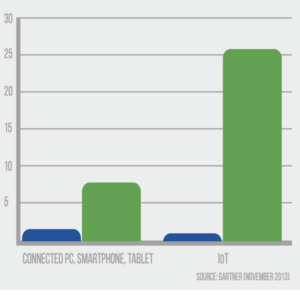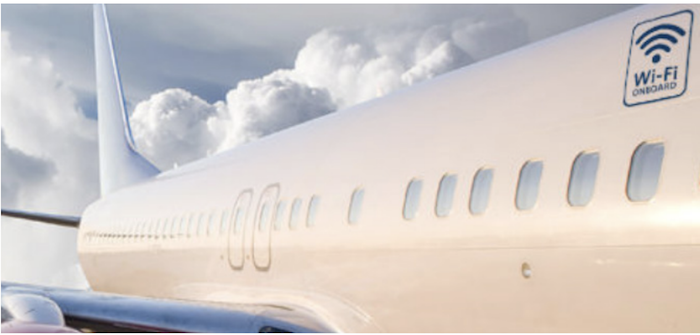Today, a new and rising generation of travelers – what Aruba Networks calls #GenMobile – are flying the skies. They are a flexible, transparent and collaborative generation with a preference for mobility, and a penchant for creativity and what’s new. #GenMobile users want airports and planes alike to provide uninterrupted wi-fi connectivity. Their wallets are driven by the desire to always be connected, and business models that fail to cater to them will slowly crumble.
#GenMobile consumers are driving transportation IT spending. According to Gartner, the demand for passenger convenience, smart transportation solutions and mobile technologies will increase IT budgets up to 10% through 2018 (see Reference 1 below). Catering to these users requires new transportation infrastructure that incorporates information and communications technology that enhances the mobile passenger experience.
Concurrent with the demand for mobile connectivity, low-cost airline carriers have increased pricing pressure, driving airlines to employ wi-fi to reduce expenses and to provide a more compelling experience for their passengers. For example, wi-fi is being leveraged for applications as diverse as baggage handling and tracking, mobile credit card readers and tablets containing pilots’ mapping and flight operations information. Some airlines are even jettisoning heavy, fixed in-seat entertainment displays and in-flight magazines in favor of streaming content over wi-fi to passenger-owned devices (see Reference 2 below).

This phenomenon of Bring Your Own Device (BYOD) is proliferating at the same speed as the growth of smart devices in the so-called Internet of Things. BYOD on aircraf is a natural extension of our connected, terrestrial lives, with airlines now offering a plethora of viewing content, as well as high-speed air-to-ground connections.
Focusing specifically on in-flight systems, the expectation among #GenMobile travelers is that communication services, and the quality of those services, should be no different in the air than on the ground. Always-on wi-fi in densely packed planes, coupled with the bandwidth demands of serving multiple channels of wireless multimedia audio and video simultaneously, make for a very challenging networking environment.
A single wi-fi access point might need to connect to more than 100 client devices, ranging from first-generation smart phones to the latest two stream 802.11ac laptops and tablets. The wi-fi network has to ensure that every device connects successfully, and that old-and-slow devices don’t impact the performance of new and-speedy ones, a common issue in wi-fi networks.
Security is another hurdle. The storage of sensitive personal and corporate data on mobile devices makes them an attractive target, and a long flight gives an attacker ample time to explore and exploit vulnerabilities. Gaining access to a plane’s network could also wreak havoc on the travel experience and undermine passengers’ confidence in the airline. In the case of government aircraft, a network breach could potentially jeopardize national security. The need for and importance of protecting the integrity of a plane’s networking infrastructure requires more than the average wi-fi solution can deliver.
From an operational point of view, an in-flight wi-fi network has to integrate into a commercial aircraft’s operating environment and work-flow. Since most maintenance personnel are not IT experts, the wi-fi network needs to incorporate easy to use diagnostic tools that quickly identify problems to root cause. Access points need to be packaged to be rugged; designed to survive in a commercial aircraft environment, yet be lightweight, low-power, and small in size. These requirements mean operating using airborne 115VAC, 360-800Hz power and meeting DO-160 requirements for environmental and EMI. Further, they need to operate robustly and reliably across a broad spectrum of altitude, overpressure, temperature, humidity, shock and vibration conditions.
Taken together, it’s clear that meeting the needs of #GenMobile passengers requires much more than just a repackaged run-of-the-mill wi-fi solution. That’s why Telefonix PDT and Aruba Networks collaborated to bring the Cabin ACeTM 802.11ac Wireless Access Point (WAP) to the commercial aircraft market.
Safe & sound
Connecting passengers and cabin crews to the aircraft’s network presents a new paradigm in aviation that is prompting a real focus on cyber security. While adding to the overall passenger experience and to the airline’s operating efficiencies with real time data, protecting the integrity and security of the airplane’s wi-fi network and user’s data is of paramount importance to airlines.

Nothing brings this point home more than when it was reported that Chris Roberts, a self-proclaimed cyber security expert announced (or rather tweeted) that he had hacked an IFE system on a flight he was on. According to reports, Roberts claimed to have compromised the aircraft network via the IFE system, overwriting code and sending commands to the aircraft’s thrust management computer, thereby issuing climb commands in conjunction with asymmetric thrust values, which cause lateral movement of the plane in flight. While the authenticity and impact of this event is being investigated by federal law enforcement and operators, it nevertheless underscores the importance of securing the aircraft network, and provisioning the enabling equipment with the latest, state-of-the-art security features and protocols.
Solutions exist, such as the Cabin ACe WAP from Telefonix (pictured above), an ultra-fast data wi-fi communications device designed specifically for aircraft environments. Incorporating Aruba Networks’ Instant 802.11ac Access Points, the Cabin ACe WAP delivers 1.3 Gbps in the 5GHz band – three-times faster throughput than last-generation 802.11n access points – while maintaining compatibility with older 802.11a/b/g devices. Security features include strong authentication and encryption to protect data and the network; an integrated firewall that supervises the behavior of devices, users and applications; access control lists; and wireless intrusion detection to detect breaches. For more details about the Cabin ACe WAP, visit the Telefonix site.
References
1) Venecia K Liu, Derry N. Finkeldey, Jeffrey Roster, Kenneth F. Brant, Vittorio D’Orazio, Anurag Gupta, Jennifer Mazzucca, Rajesh Kandaswamy, Katell Thielemann, Forecast Overview: Enterprise IT Spending, Across Vertical Industries, 2014 Update, Gartner, 25 July 2014
2) Rajesh Kandaswamy, Derry N. Finkeldey, Jeffrey Roster, Kenneth F. Brant, Vittorio D’Orazio, Anurag Gupta, Christine Arcaris, Jennifer Mazzucca, Venecia K Liu, Katell Thielemann, Market Trends: Where to Find Opportunities for Mobile Solutions in Vertical Industries, Gartner, 22 July 2014





